Side blog of @kclenhartnovels. A collection of advice, prompts, and more for all your writing needs. Help support me by checking out my work on my main blog, or buy me a coffee.
Don't wanna be here? Send us removal request.
Text
31K notes
·
View notes
Note
Hey! I've been trying to find a place to ask this and you seem like you might have an idea.
I want to make the main character of my fantasy story a POC (probably would look closest to a black person, but since it's a different world the races are a little different). My concern is that the country she is from is rather backwards and other characters have to comment on this at times.
She will not be the only character of her race, and her race is not the only one that comes from this country, or the only one from this country in the main group.
However, I am concerned that this could be problematic. I can't change how the country is viewed otherwise it would change the story, so should I just change her appearance to avoid issues?
There will be people of her race who comment on the problems in the country she is from, so it won't be like all white-ish people looking down on POCs or anything.
Do you have any advice here?
My advice is to ask this to @writingwithcolor -- they are much more the experts than I am, considering I am not a POC (as probably evident by the color of my hands in my profile picture). They are a great resource and always answer in depth -- take a look through their whole blog!
32 notes
·
View notes
Text
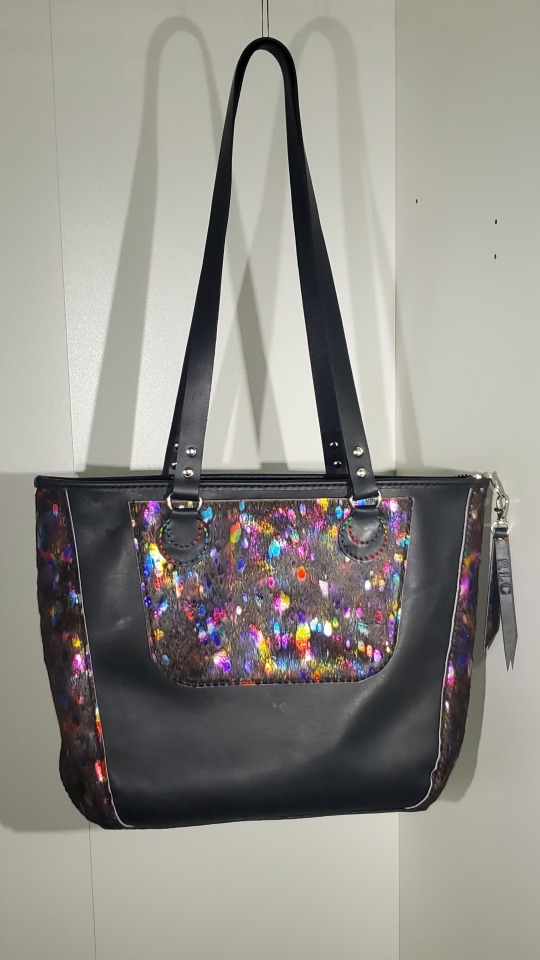
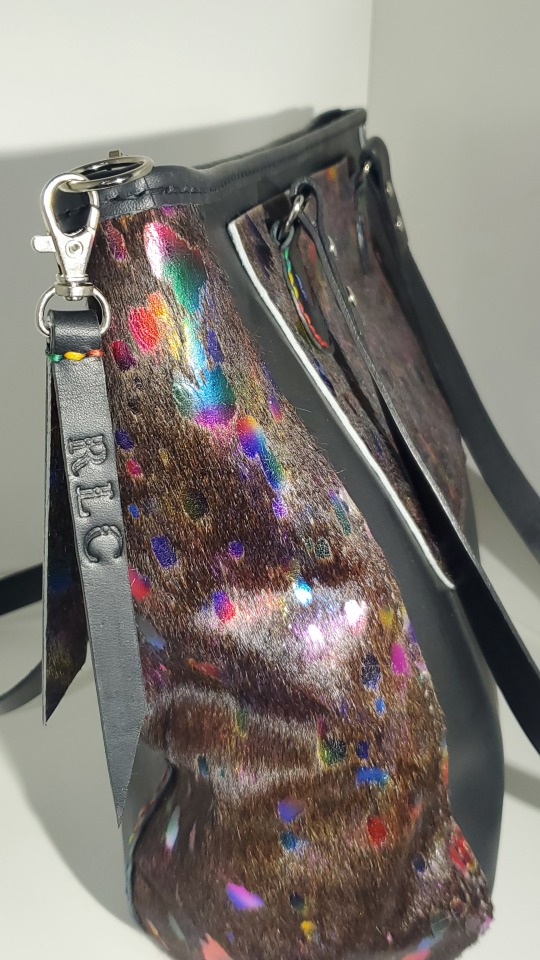

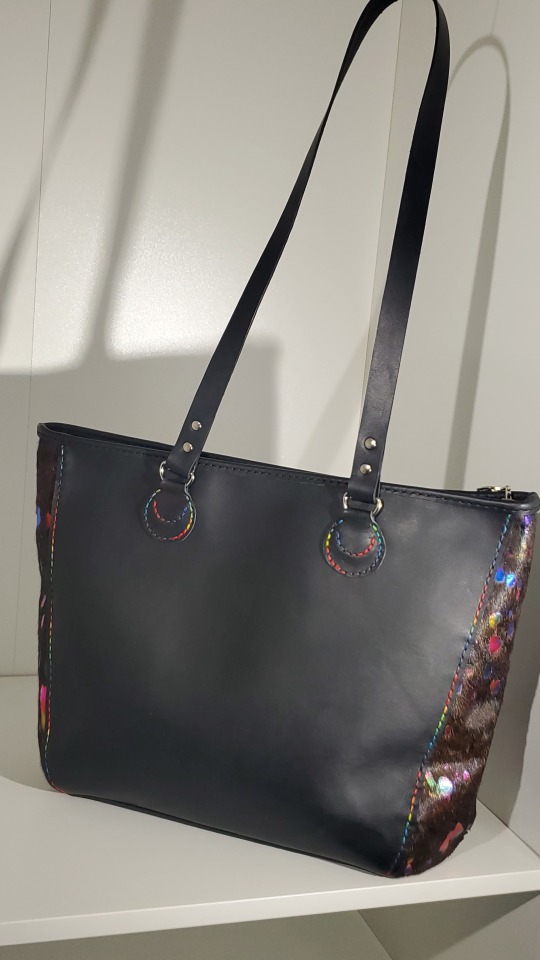
This is definitely my new favorite piece! 100% hand stitched and made with pride, this tote is real black leather and hair-on acid washed rainbow cow hide. Finished with rainbow stitching and a rainbow heart zipper, it's super shiny, soft, and durable. One of a kind! What do you think?
28 notes
·
View notes
Photo
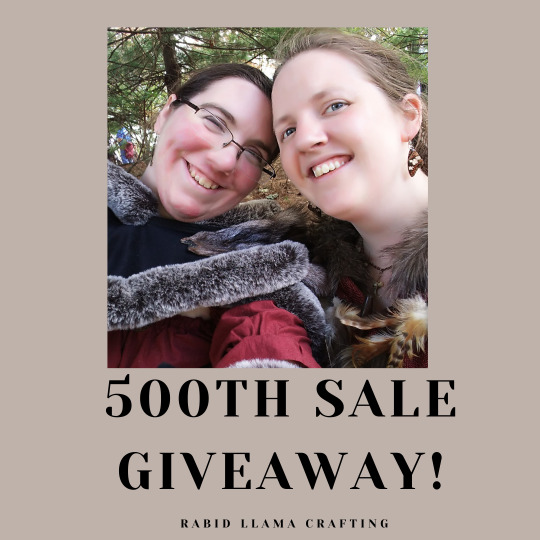
We are at 496 sales, so it’s time for another giveaway! Whoever makes the 500th purchase will get a free bonus item that matches what they buy. Jewelry will get another jewelry piece, tails a bonus tail, bags a keychain, etc. Keep your eyes peeled for a no-purchase necessary social media contest coming soon, where all you need to do is share to win!
11 notes
·
View notes
Text
Paragraph breaks every time a new character speaks is sexy, remember to do them more often
1K notes
·
View notes
Note
"Narrative distance"? Do tell!
Explain it in text? Without emphatic arm gestures or wine? Oh god. Okay. I’ll try.
All right, so narrative distance is all about the proximity between you the reader and the POV character in a story you’re reading. You might sometimes also hear it called “psychic distance.” It puts you right up close to that character or pulls you away, and the narrative distance an author chooses greatly affects how their story turns out, because it can drastically change the focus.
Here’s an illustration of narrative distance from far to close, from John Gardner’s The Art of Fiction (a book I yelled at a lot, because Gardner is a pretentious bastard, but he does say very smart things about craft):
It was winter of the year 1853. A large man stepped out of a doorway.
Henry J. Warburton had never much cared for snowstorms.
Henry hated snowstorms.
God how he hated these damn snowstorms.
Snow. Under your collar, down inside your shoes, freezing and plugging up your miserable soul
It feels a bit like zooming in with a camera, doesn’t it?
I always hate making decisions about narrative distance, because I usually get it wrong on the first try and have to fix it in revision. When I was writing Lost Causes, the first thing I had to do in revision was go through and zoom in a little on the narrative distance, because it felt like it was sitting right on top of Bruce’s prickly skin and it needed to be underneath where the little biting comments and intrusive thoughts lived.
Narrative distance is probably the simplest form of distance in POV, and there is where if I had two glasses of wine in me you would hit a vein of pure yelling. There are SO MANY forms of distance in POV. There’s the distance between the intended reader and the POV character, the distance between the POV character and the narrator (even if it’s 1st person!), the distance between the narrator and the author. There’s emotional distance, intellectual distance, psychological distance, experiential distance. If you look closely at a 3rd person POV story, you can tell things about the narrator as a person (and the narrator is an entity independent of the author) - like, for starters, you can tell if they’re sympathetic to the POV character by how they talk about their actions. Word choice and sentence structure can tell you a narrator’s level of education and where they’re from; you can sometimes even tell a narrator’s gender, class, and other less obvious identifying factors if you look closely enough. To find these details, ask: What does the narrator (or POV character, or author) understand?
I can’t put a name on the narrator of the Harry Potter books, but I can tell you he understands British culture intimately, what it’s like to be a teen boy with a crush, to not have money, to be lonely and abused, and to find and connect with people. There’s a lot he doesn’t understand (he doesn’t pick out little flags of queerness like I do, so he’s probably straight, for example), but he sympathizes with Harry and supports him. I like that narrator. I’m supposed to sympathize with him, and I do.
POV is made up of these little distances - countless small questions of proximity that, when stacked together, decide whether we’re going to root for or against a character, or whether we’ll put down a book 20 pages in, or whether a story will punch you in just the right place at just the right amount to make you bawl your eyes out.
There are so many different possible configurations of distance in this arena that there are literally infinite POVs. Fiction is magical and also intimidating as fuck.
22K notes
·
View notes
Note
Hi there! If you feel up to it, would you be willing to expand a bit more on the idea of white creators creating poc characters who are ‘internally white’, especially in a post-racialized or racism-free setting & how to avoid it? It’s something I’m very concerned about but I haven’t encountered a lot of info about it outside of stories set in real world settings. Thanks & have a good day!
Hey, thanks for asking, anon! It’s a pretty nuanced topic, and different people will have different takes on it. I’ll share my thoughts on it, but do keep in mind that other people of colour may have different thoughts on the matter, and this is by no means definitive! These are things I’ve observed through research, trial and error, my own experiences, or just learning from other writers.
The first thing I guess I want to clarify is that I personally am not opposed to a society without racism in fiction. It’s exhausting and frankly boring when the only stories that characters of colour get are about racism! So it’s a relief sometimes to just get to see characters of colour exist in a story without dealing with racism. That being said, I feel like a lot of the time when creators establish their settings as “post-racial,” they avoid racism but they also avoid race altogether. Not aesthetically -they may have a few or even many characters with dark skin- but the way the characters act and talk and relate to the world are “race-less” (which tends to end up as default white American/British or whatever place the creator comes from). Which I have complicated thoughts on, but the most obvious thing that springs to mind is how such an approach implies (deliberately or not) that racism is all there is to the way POC navigate the world. It’s definitely a significant factor, particularly for POC in Western countries, but it’s not the only thing! There’s so much more to our experiences than just racial discrimination, and it’s a shame that a lot of “post-racial” or “racism-free” settings seem to overlook that in their eagerness to not have racism (or race) in their stories.
A quick go-to question I ask when I look at characters of colour written/played by white creators is: if this was a story or transcript I was reading, with no art or actors or what have you, would I be able to tell that this character is a character of colour? How does the creator signal to the audience that this is a character of colour? A lot of the time, this signal stops after the physical description - “X has dark skin” and then that’s all! (We will not discuss the issue of racial stereotypes in depth, but it should be clear that those are absolutely the wrong way to indicate a character of colour).
This expands to a wider issue of using dark skin as a be-all-end-all indication of diversity, which is what I mean by “aesthetic” characters of colour (I used the term “internally white” originally but upon further reflection, it has some very loaded implications, many of which I’m personally familiar with, so I apologize for the usage). Yes, the character may not “look” white, but how do they interact with the world? Where do they come from? What is their background, their family? A note: this can be challenging with diaspora stories in the real world and people being disconnected (forcibly or otherwise) from their heritage (in which case, those are definitely stories that outsiders should not tell). So let’s look at fantasy. Even the most original writer in the world bases their world building off existing things in the real world. So what cultures are you basing your races off of? If you have a dark skinned character in your fantasy story, what are the real world inspirations and equivalents that you drew from, and how do you acknowledge that in a respectful, non-stereotyped way?
(Gonna quickly digress here and say that there are already so many stories about characters of colour disconnected from their heritage because ‘They didn’t grow up around other people from that culture’ or ‘They moved somewhere else and grew up in that dominant culture’ or ‘It just wasn’t important to them growing up’ and so on. These are valid stories, and important to many people! But when told by (usually) white creators, they’re also used, intentionally or not, as a sort of cop-out to avoid having to research or think about the character’s ethnicity and how that influences who they are. So another point of advice: avoid always situating characters outside of their heritage. Once or twice explored with enough nuance and it can be an interesting narrative, all the time and it starts being a problem)
Another thing I want to clarify at this point is that it’s a contentious issue about whether creators should tell stories that aren’t theirs, and different people will have different opinions. For me personally, I definitely don’t think it’s inherently bad for creators to have diverse characters in their work, and no creator can live every experience there is. That being said, there are caveats for how such characters are handled. For me personally, I follow a few rules of thumb which are:
Is this story one that is appropriate for this creator to tell? Some experiences are unique and lived with a meaningful or complex history and context behind them and the people to whom those experiences belong do not want outsiders to tell those stories.
To what extent is the creator telling this story? Is it something mentioned as part of the narrative but not significantly explored or developed upon? Does it form a core part of the story or character? There are some stories that translate across cultures and it’s (tentatively) ok to explore more in depth, like immigration or intergenerational differences. There are some stories that don’t, and shouldn’t be explored in detail (or even at all) by people outside those cultures.
How is the creator approaching this story and the people who live it? To what extent have they done their research? What discussions have they had with sensitivity consultants/readers? What kind of respect are they bringing to their work? Do they default to stereotypes and folk knowledge when they reach the limits of their research? How do they respond to feedback or criticism when audiences point things that they will inevitably get wrong?
Going back to the “race-less” point, I think that creators need to be careful that they’re (respectfully) portraying characters of colour as obvious persons of colour. With a very definite ‘no’ on stereotyping, of course, so that’s where the research comes in (which should comprise of more than a ten minute Google search). If your setting is in the real world, what is the background your character comes from and how might that influence the way they act or talk or see the world? If your setting is in a fantasy world, same question! Obviously, avoid depicting things which are closed/exclusive to that culture (such as religious beliefs, practices, etc) and again, avoid stereotyping (which I cannot stress enough), but think about how characters might live their lives and experience the world differently based on the culture or the background they come from.
As an example of a POC character written/played well by a white person, I personally like Jackson Wei and Cindy Wong from Dimension 20’s The Unsleeping City, an urban fantasy D&D campaign. Jackson and Cindy are NPCs played by the DM, Brennan Lee Mulligan, who did a good job acknowledging their ethnicity without resorting to stereotypes and while giving them their own unique characters and personalities. The first time he acted as Cindy, I leapt up from my chair because she was exactly like so many old Chinese aunties and grandmothers I’ve met. The way Jackson and Cindy speak and act and think is very Chinese (without being stereotyped), but at the same time, there’s more to their characters than being Chinese, they have unique and important roles in the story that have nothing to do with their ethnicity. So it’s obvious that they’re people of colour, that they’re Chinese, but at the same time, the DM isn’t overstepping and trying to tell stories that aren’t his to tell. All while not having the characters face any racism, as so many “post-racialized” settings aim for, because there are quite enough stories about that!
There a couple factors that contribute to the positive example I gave above. The DM is particularly conscientious about representation and doing his research (not to say that he never messes up, but he puts in a lot more effort than the average creator), and the show also works with a lot of sensitivity consultants. Which takes me to the next point - the best way to portray characters of colour in your story is to interact with people from that community. Make some new friends, reach out to people! Consume media by creators of colour! In my experience so far, the most authentic Chinese characters have almost universally been created/written/played by Chinese creators. Read books, listen to podcasts, watch shows created by people of colour. Apart from supporting marginalized creators, you also start to pick up how people from that culture or heritage see themselves and the world, what kind of stories they have to tell, and just as importantly, what kind of stories they want being told or shared. In other words, the best way to portray an authentic character of colour that is more than just the colour of their skin is to learn from actual people of colour (without, of course, treating them just as a resource and, of course, with proper credit and acknowledgement).
Most importantly, this isn’t easy, and you will absolutely make mistakes. I think the most important thing to keep in mind is that you will mess up. No matter how well researched you are, how much respect you have for other cultures, how earnestly you want to do this right, you will at some point do something that makes your POC audience uncomfortable or even offends them. Then, your responsibility comes with your response. Yes, you’ve done something wrong. How do you respond to the people who are hurt or disappointed? Do you ignore them, or double down on your words, or try to defend yourself? Just as importantly, what are you planning to do about it in the future? If you have a second chance, what are you going to do differently? You will make mistakes at some point. So what are you going to do about them? That, I think, is an even more important question than “How can I do this right?” You may or may not portray something accurately, but when you get something wrong, how are you going to respond?
Essentially, it all comes down to your responsibility as a creator. As a creator, you have a responsibility to do your due diligence in research, to remain respectful to your work and to your audience, and to be careful and conscientious about how you choose to create things. It’s not about getting things absolutely perfect or being the most socially conscious creator out there, it’s about recognizing your responsibilities as a creator with a platform, no matter how big or small, and taking responsibility for your work.
In summary:
Research, research, research
Avoid the obvious no-no’s (stereotypes, tokenization, fetishization, straight up stealing from other cultures, etc) and think critically about what creative choices you’re making and why
Do what you’re doing now, and reach out to people (who have put themselves out there as a resource). There are tons of resources out there by people of colour, reach out when you’re not sure about something or would like some advice!
Responsibility, responsibility, responsibility
Thank you for reaching out! Good luck with your work!
576 notes
·
View notes
Text
Fantasy Wardrobe: Historical Gowns Part 2
Fashion is one of my favourite worldbuilding components and choosing which way I want characters to look, is one part of research that is more fun than work. The use of different styles give each culture a defined feel and could act as a symbol of all kinds of lands in your WIP. Since it is your WIP, you can play with different elements of the gowns and pay fast and loose with the styles.
Well, I decided to expand one of the most popular posts I have done on here. Here I have explored more Gowns of history, some interesting styles to consider for your WIP. You can find part 1 here
Sari


The Sari is the traditional dress of the women of India. The sari is an unstitched drape of cloth wrapped around the waist and over one shoulder. The sari as an entire collection consisted of:
Choli: This the blouse part of the sari. It was usually cut to fit the body close, baring the middrift with a low neck and shortened sleeves.
Lehnga or langa, or Ghagra or gagra, Chaniya, Pavadai and Lacha: The Lehnga is a form of full ankle-length skirt worn by women in India. The skirt is usually long and thickly embroidered and decorated. Though it has become outdated today, it remains one of the most recognisable garments in the world. It was worn, secured at the waist to leave the lower back and midriff bare. Lehenga are usually embroidered with certain patterns which dictated locality in some regions of India.
Dupatta: The dupatta is a long scarf-like drape of fabric, worn like a shawl.
Stola

The stola was the traditional garment of Roman women. The stola, usually made of wool but sometimes of linen, was worn as a symbol of matronly behaviour and as a symbol of a good Roman woman. (women had worn togas before but it had become associated with prostitution so they stopped). The stola was usually made of linen or wool or even silk depending on the wearer. The stola was worn over a shorter tunic and was often sleeveless though by the Byzantine era, the women began adopting longer sleeves.
Tunic

The tunic is perhaps the most recoccurring women’s garment in history. The tunic was rather like a long t-shirt, worn either sleeveless, with long sleeves or short sleeved. Tunics could reach the ground or fell to the knee. Tunics were worn in ancient times straight up to modern times.
Kimono

The kimono is the traditional dress of Japan. The kimono is typically a T-shaped, with long squarish sleeves, at the front of the wearer (the left side wrapped over the right side unless the wearer is dead) The kimono is a layered garment worn with a slew of accessories such as the obi (the decorative belt worn to keep the kimono closed). The kimono is a complicated garment with each piece having its own special term: Dōura ( the upper lining of a kimono), Hakkake ( the lower lining of a kimono), Eri (the collar), fuki (the hem), Furi (the hang of the sleeve) Maemigoro ( the front panels), Miyatsukuchi (the opening of the sleeve), Okumi (the overlapping front panel), Sode (sleeve), Sodeguchi (opening of the sleeve), Susomawashi (lower lining) Tamoto (pouch in the sleeve), Tomoeri (over-collar), Uraeri (the inner collar), Ushiromigoro (the back panels).
Dashiki

The dashiki or Java is a popular garment in Africa and some parts of Indonesia. The dashiki is rather like a large t-shirt, loose-fitted and pulled over the head. The dashiki could be as plain or as decorated as the wearer pleases, meaning it was worn casually and formally.
Kaftan
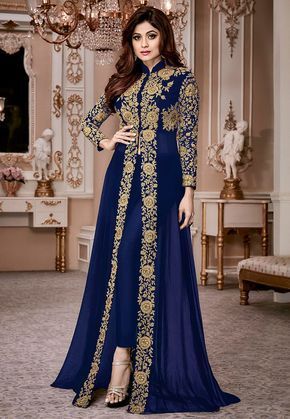
The kaftan was and remains a popular garment worn by many cultures spanning Eastern Europe to the Middle East and Asia. The kaftan was often long-sleeved, made of linen, silk or cotton and worn with sashes. The kaftan were often status symbols sometimes associated with the upper class and royalty.
Deel

The deel is the traditional dress of the nomadic Mongolian and Asian tribes. The deel is like long coat, fastened at the front with clasps or pavings to pull each side over the wearer’s body. The fastenings are commonly placed at the shoulder, armpit and neckline. The deel would be fastened with a sash.
Hanfu

The Hanfu was the traditional style of the Han dynasty of China. The main style of the Hanfu style of dressing consisted of a long robe or shirt as well as a traditionally pleated skirt. The Hanfu consisted of many pieces l again each with their own terminology. Yi (the open collar garment), Ru (Open collar shirt), Shan (open collar shirt or jacket worn over the yi), Qun/chang (the skirt), Ku (loose trousers).
Peplos
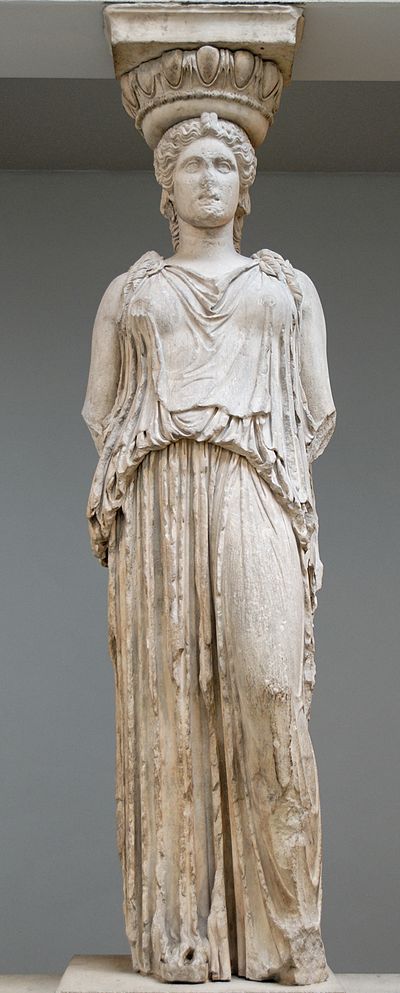
The Peplos a long, slender gown of the Ancient Greeks. The Peplos was often folded so to drape at the waist, caught by a sash. The garment was held in place by broaches at the shoulder.
2K notes
·
View notes
Text
Alright.
Instead of whispered, consider:
murmured
mumbled
muttered
breathed
sighed
hissed
mouthed
uttered
intoned
susurrated
purred
said in an undertone
gasped
hinted
said low
said into someone’s ear
said softly
said under one’s breath
said in hushed tones
insinuated
636K notes
·
View notes
Text
New dice bags now available in shop! Made so you have a surface to roll on as well, two of the four we made have already sold. Custom orders are available for colors and design of your choice.
39 notes
·
View notes
Text
My Big Marketing Secret
Have YOU ever wanted to create a social media platform that will GROW YOUR FOLLOWING? All you need is this ONE SECRET. MARKETING EXPERTS HATE HER.
Except it’s not really a secret it’s just something that people instinctually know, they just don’t quite understand what it is, so it can’t be utilized effectively. I could break it down into quippy million dollar advice but frankly that’s boring and I hate the old white men who do that. So bear with me.
The gist comes down to developing a parasocial relationship with your following that allows your audience to engage with you in a way that is meaningful to them, but doesn’t tax you emotionally. This hacks the inherent impoliteness of social media platforms and... It feels a little scummy when you do it. All marketing does, really. You are, in essence, tricking people into thinking you care about them—but at the same time, you’re not, because somewhere deep inside most people realize that a parasocial only goes one way. So eschew morality for a moment. We’re going full capitalist baby. Rather than giving you rinse and repeat examples, I’ll try to provide core principles that you can build your following off of.
1) Questions should allow your following to talk about your pitch...while talking about themselves. Rather than saying “Who is your favorite character from X book I’ve written”, try “X character from book I’ve written is like this—who are characters from your favorite books who would love or hate X?” This not only includes an audience who may not have read your book, but allows that audience to engage in a way that is meaningful to them.
2) Response is seen as self-actualization no matter how minimal the response. I see it all the time on TikTok—creators I follow will usually just reply with a string of emojis but it still feels good! They noticed I exist! To take it to the next level—for comments you really enjoy, you can type out a full response and spark another conversation!
3) this could be 2.5 but stands on its own as a principle. Response is important, but replying to everyone could undermine you. It’s the ‘if everyone is special no one is’ idea. Choose the best or the most recent comments depending on how large your following is. Members of your following will notice this—and they will try to work harder to gain your favor and attention. This may take the form of higher user engagement or it may take the form of sales, the latter being optimal in this case.
4) Social Media marketing is not about you. Yes it’s promoting your product, but in the sense of what I’m suggesting vis a vis parasocial relationships, your focus should be on the audience you’re cultivating. Make sure that the type of content you’re engaging with will tie in a new potential audience as well as foster a sense of community between you and your following. If you write romance and reblog stuff about the large hadron collider, you might be narrowing your audience instead of expanding it.
A common criticism I’ve received in this methodology is that this promotes quantity of audience over quality. However, if you assume that if 5% of your potential audience will become fans or 1% consumers, then you have to play the numbers game. The more people you reach, the more people you’re likely to find who really connect with your work.
Now obviously these are just tips. Do with this what you will. However, this is what I have noticed from analyzing the behavior of popular creators as well as my own personal tests in this regard. Go forth fellow scumbags and Capitalism well.
448 notes
·
View notes
Text
On writing characters with disabilities
I’ve had a rough morning and I’m riled up so here’s my two cents. Repeat: my two cents. I do not claim to speak for or represent the beliefs of everyone with a disability.
INCLUDE CHARACTERS WITH DISABILITIES
[Can’t believe I’m still saying this but here we are]
No, not “disabled characters”, put your character before their disability but include it nonetheless. People with disabilities exist in real life, out in the world, living and breathing and going about their days in the same spaces as able-bodied people. No their disability does not have to further the plot because that’s not how life works. If you want realism, include characters with disabilities. We’re all around you. I guarantee you know several people with disabilities even if you don’t think of them that way.
“But a disabled person can’t be a soldier/mercenary/other badass fighty character which is apparently all I include in my story!”
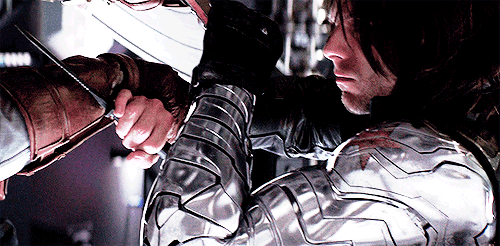
A) Yes they can. If you’re only aware of physical disabilities that completely limit a person’s mobility, you’re not aware of the diversity of disabilities or the mobility aid options and it’s time to do some research. Peg leg, bionic eyes, arm made of gears and pneumatics-based imitation tendons for each individual finger, magic potions or holistic treatments for chronic pain management, mental disabilities, someone who has a disability but is in remission. Get. Creative. These people exist and function in the same spaces as your perfectly able-bodied soldiers/mercenaries/various badasses.

B) Let’s say they can’t. Let’s say, for whatever reason, your badasses must only be completely physically and mentally abled. Do you not have medics? Blacksmiths? Ammunition and weapons experts/providers? Pilots? Family members back home that your badasses fight for and return to once a month? What about the bar/tavern/club/restaurant/dining tent your badasses regularly visit - are there no servers or cooks or bartenders that they talk to? Hell, a prostitute with a missing arm or severe ADHD. Are you really telling me you don’t think it’d be fun, and beyond handy, to have a magic healer who happens to be paralyzed from the waist down in your crew who’s constantly cracking jokes and shutting down shitty behaviour? Sure they may not fight because your fighters are only perfectly abled, but damn are they good at the fix-up after.
“But I don’t want to write a sob story”
Yikes. Well, good news, you don’t have to. People with disabilities can be ridiculous and funny and fun in general and it doesn’t always revolve around their condition. However, they will make jokes about their condition and, given the right people, can be joked with about it. “The right people” varies person to person, but I find for the most part it’s close friends and family members who act as strong supports and will also joke about things outside of the person’s disability. For this, you may want to talk to real life people with disabilities. Seriously, we’re everywhere. If you built rapport, many of us would be happy to tell you if a joke/situation is offensive even within the context of goofing around with a friend. Hell, some of us (ex. me) would be willing to answer questions from a total stranger if it’s in the name of providing education and support on writing a character with a disability.


[in which my best friend is a gift and figured out reassuring me I wasn’t a burden wasn’t working so she settled on calling me her favourite burden]
“But I don’t always want to be talking about their disability”
You. Don’t Have. To. It’s almost like, with all character traits/quirks/identifiers, it happens occasionally and within context.
____
She bowed her head low and bent her elbows at funny angles, tying her hair up quickly so she didn’t have to hold her arms up for long.
“Bad shoulder day?”
“Yeah, kept me up all night.” She dropped her hands, straightened up, and stretched her neck, rolling her head side to side. “Alright. Let’s do this.”
____
Washing bitter pills down with even more bitter coffee, he went over his tasks for the day. Dry cleaning, groceries, bank, assassination. Easy enough.
____
“They can’t take the stairs. We’re leaving them behind.”
“Or, you inconsiderate rat bastard, we could find an alternate route. You’re not getting through security without them. They’re coming.”
TL;DR, it’s not hard to throw in the realities of living with a disability every few chapters, or whenever relevant.
Lastly, the topic of using the word(s) “disabled/disability” and naming a diagnosis.
This, for me, isn’t really a big thing. I can understand how it is for some people, and I’m a fan of it but I don’t consider it a necessity. Some people want to see the word ‘disability’ used in order to take away its stigma. Some people want to see diagnoses named for the sake of completely being able to purely relate to a character. I understand that. I’m not bashing that. This is just my opinion. Personally, I don’t see the need, especially in fantasy settings or scifi or general other-world where conditions may not have the same names or treatments as they do in real life. If you make it clear that your character has a disability, show the symptoms and the ways in which they cope/manage/adjust to carry on with their lives, show their ups and downs and condition management, that’s enough for me.
This might be the area that you upset and offend some people. Someone might get mad that you used the word ‘disabled’, some might get mad that you didn’t. Some might get upset that you ‘made up’ your own condition, some might get upset that you named a diagnosis and didn’t portray it in a way they felt was accurate. Unfortunately, that’s the reality and your choice to make which group you want to potentially upset. Do your research, do your best to be sensitive, make an informed decision. Ultimately, I don’t think I’m alone in saying I’d rather see characters with unnamed disabilities portrayed in a positive way than not portrayed at all.
Please, include characters with disabilities. It can actually contribute to the realism of your stories and you might be surprised how fun it can be to write.
10K notes
·
View notes
Photo
Remember that side business I mentioned? We’re having a sale!
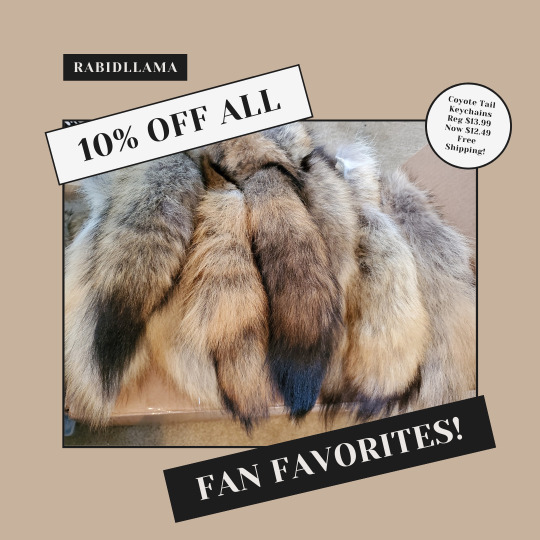


New sale starts today! I picked all of our items that have 15 or more favorites in the last 30 days, and let the popularity choose the sale! Treat yourself, and ring in the new year by supporting small business
11 notes
·
View notes
Text
Hey everyone!
As some of you may have noticed, I have been very, uh, sporadic here lately. And also very bad at answering asks.
Aside from 2020 being a dumpster fire, I do work a full time job (essential worker, yay), and the wife and I have been dedicating a lot of time to our side business as well. So my free time both to do personal writing (RIP me) and manage this and my other blog has been severely decreased.
That being said, don’t be afraid to message me! It just might take uhhhh six years to get an answer.
12 notes
·
View notes
Note
hey there, i'm writing a supernatural fiction story and i've been having trouble with a character's POV. i need to introduce a lot of worldbuilding concepts through him (because he's the only one who knows this information), but i don't want to inundate readers with overly-detailed info, nor do i want to be vague and confusing by being too brief. do you have any advice on how to maintain the balance between infodumping and glossing over important information? i really like your blog btw!
Hello!
This is a common problem with anyone who has a lot of worldbuilding, and I can raise my hand and whine about it as well.
What I found success was, first, put it all in somewhere in your first draft, so that you have all the information you need later. I found out a lot more about my world and everything else by just writing it in, and letting it be a chunky beast. Of course, this meant some intensive editing later, but it helped me filter out what was really important versus “this is really cool, but ultimately unnecessary.” This type of process definitely has a lot of kill your darlings, in the end.
If that sounds like a horrible experience to go through (and it can be, at times), your next best resource is your beta readers. They don’t know your world. Maybe create a few different versions, and let your readers tell you if they are confused or if they are slogging through too much information. I think we, as writers, tend to assume that our readers are stupid. But readers can infer a lot from small, passing details! And if something is missed sometimes, that’s okay. I personally love books where, every time i re-read them, I get more information that I missed last time. It increases the re-reading value for me.
I hope this helps!
14 notes
·
View notes
Note
Hello there... If I'm not bothering you terribly, perhaps you could give me some writing advice? I only have dialogue ideas, and I have no idea how to connect them at all... I want to keep it short, so I don't know how to shift from one conversation to another. Do you have any tips?
Oh, man, I feel this. I love writing dialogue, and sometimes I feel like most of my stories are just idiots quipping at each other. But -- and I’m going to sound like a broken record when it comes to advice -- this sounds like a second or third draft problem. Once you get it all down on paper to begin with, then you can sit back and take a look at what is necessary, what can be cut, and what needs to happen in between.
What is driving that dialogue? What action needs to take place in order for the conversations to make sense, and to move on? A fun exercise is to try writing the same scene without using any speaking at all. Are you still getting your point across? And if so, what is really needed to be spoken, versus what can just be shown? Now you can go back in and look at your transitions, your scenes, and your story as a whole.
There aren’t any hard and set rules in writing; maybe your story is one that is going to be told all through what the characters are saying to each other, and that’s fine! Have you thought about writing a screenplay, instead of a novel? Maybe you need to look at your medium, something that lends itself to scene jumps with a smoother transition than paper.
13 notes
·
View notes
Note
Hi, I was just asking for some advice, it’s fine if you don’t answer. I’ve always loved reading and imagining stories in my head but I’ve never really been good at writing. Recently I got it into my head to try to get better at it. Do you have any tips for a beginner. (And by beginner I mean the only stories I’ve written were the ones my english teacher made me do.)
Are you sure you’re not good at writing?
I’ll give you a big (not very big) secret: Most of us feel like we’re not really good at it. But the best way to get better is the same way as any art form, which is practice, practice, practice. Try writing in different styles, do prompts, flex your creative muscles. And read a great variety, write down any ideas you get along the way, and forgive yourself when you fail.
We all start as beginners. No one wakes up a master of their craft. It takes time, practice, repetition, and perhaps a touch of madness. But most of all, have fun with it!
15 notes
·
View notes